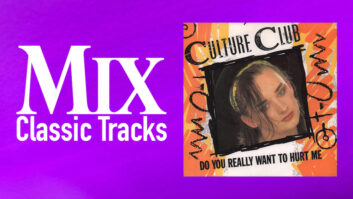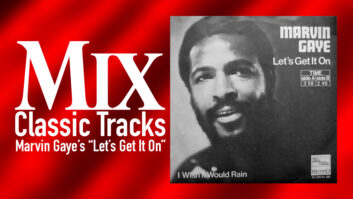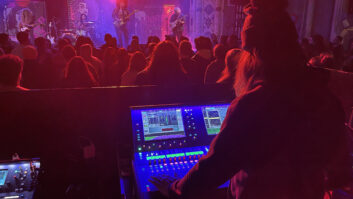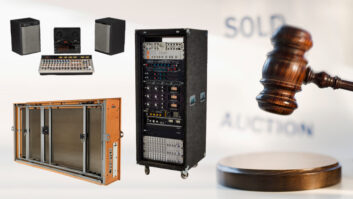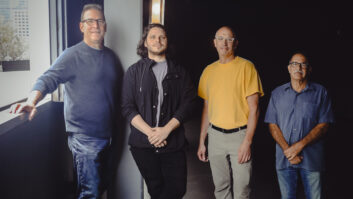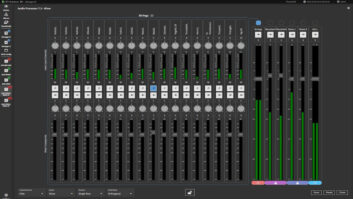Desmond Child certainly has to be considered one of the most influential pop music composers of recent years. He co-wrote much of Slippery When Wet with Jon Bon Jovi, including the anthem “Livin’ on a Prayer” (which essentially defined the hair-band culture of the 1980s), on through cuts for Aerosmith (“Angel,” “Dude Looks Like a Lady”), Joan Jett, Cher, Hanson, Trisha Yearwood and Alice Cooper. Along the course of what would turn out to be a very unorthodox career, Child’s auteur inclinations came to the fore, and he turned to producing much of what he wrote, including tracks for Cooper, Cher, Jett, Billie Myers and Megadeth, among many others.
In 1995, after stints living in Los Angeles and Nashville, Child settled into Miami Beach. There he and longtime manager/partner Winston Simone solidified a growing relationship with Universal Records that culminated in Child creating his own label, Deston Entertainment, distributed by Universal Music Group. That, says Charles Dye, the engineer who now oversees Child’s growing studio, is the reason the composer jumped from working on a 4-track cassette deck and a Boss drum machine in his L.A. home to a three-studio complex completely outfitted with virtual recording technology. “The studio is the hub for the record company,” says Dye, who, before joining Child, worked in Miami as personal engineer and studio manager for Jon Secada.
When Dye arrived on the scene, Child had the first room completed. It was built in a two-car garage on his residential property in Miami Beach, and designed and installed by David Frangioni of Audio One. But Dye is quick to stress that the aesthetics and ergonomics of what is now known as The Gentlemen’s Club are purely Child’s: From club chairs and overstuffed sofas, clients gaze onto saltwater fish tanks, overflowing bookshelves and oil paintings; racks of outboard gear are cleverly disguised in cabinetry. Even the basic technology platforms are discreet; Child decided early on that he wanted to work in a virtual domain, and all three studios are now equipped with Digidesign Pro Tools 24-bit, 64-track systems. A Mackie console and Otari MX-80 24-track are barely touched anymore, and a 20-bit Alesis ADAT II is generally reserved for transfers.
“When you listen to a Desmond Child song, whether he just wrote it or wrote and produced it, you realize pretty quickly that the vocal and the lyric are paramount,” Dye explains. “He puts a lot of energy into a production, but most of it goes into the vocals. I remember seeing his comp sheets when he was working in analog, and it’s amazing what he was able to accomplish with that technology-there are parts of vocals all over the tracks that had to be put together. He was using a technique that Tom Dowd used to use, which was to put six tracks of vocals up and bus them to a seventh track and use really fast crossfades instead of mutes to get a comp without pops and clicks. It works, but it’s a lot of work. He certainly wasn’t compromising just because he was working on analog. But you can certainly see why digital makes so much more sense for Desmond, both for recording and mixing.
“Pro Tools works in bars and beats, so you can use cut-and-paste techniques to fly things around,” Dye continues, “and the Auto-Tune plug-in is great to avoid burning out a singer trying to get the pitch perfect, which Desmond is a stickler for. A lot of people think that pitch correction steals feeling from a performance, but if you use it correctly, it actually frees singers up emotionally because they’re not worrying about the pitch instead of the performance.” Dye uses Focusrite Red Range and vintage Neve mic pre’s and compressors to take vocals directly into the Pro Tools systems. He and Child will also sometimes use nearby Criteria Studios (where Dye started as an assistant engineer 15 years ago), for cutting basic tracks.
Besides serving as the hub for the record label, the studio continues to be the interactive lab where Child uses his preternatural ability to create very, very successful pop music. For their debut album, Hanson sent over a minimalist piano-vocal version of a Desmond Child co-written ballad, “Weird.” Dye and Child took the analog multitrack to Criteria, added live drums, then returned to The Gentlemen’s Club, dumped the analog tracks into Pro Tools, and laid down guitars and background vocal parts. “Weird” became the smash debut album’s third hit single. Both Aerosmith and Bon Jovi have used the studio in similar fashion. The first full record production to be done there was Billie Myers’s Growing, Pains (featuring the hit “Kiss The Rain”). Ricky Martin cut the hugely successful 1998 World Cup theme song “The Cup of Life (La Copa de la Vida)” at The Gentlemen’s Club, and the studio is now hosting sessions for the first release on Child’s label, Jason Raize (who plays the lead role in the Broadway production of The Lion King). Dye is also mixing for Sammy Hagar’s forthcoming release.
“I’ve done the freelance thing, and there’s not a lot of security in it,” Dye says. “Desmond likes things orderly, and so do I, so we’re a perfect match. That’s important for this kind of relationship, and that’s not something you always get when you’re a freelance engineer.”
